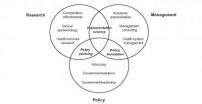(Press-News.org) CORVALLIS, Ore. – A study has found that young, less-experienced surgeons made major surgical mistakes almost half the time during a "simulated" gall bladder removal when they were distracted by noises, questions, conversation or other commotion in the operating room.
In this analysis, eight out of 18, or 44 percent of surgical residents made serious errors, particularly when they were being tested in the afternoon. By comparison, only one surgeon made a mistake when there were no distractions.
Exercises such as this in what scientists call "human factors engineering" show not just that humans are fallible – we already know that - but work to identify why they make mistakes, what approaches or systems can contribute to the errors, and hopefully find ways to improve performance.
The analysis is especially important when the major mistake can be fatal.
This study, published in Archives of Surgery, was done by researchers from Oregon State University and the Oregon Health and Science University, in the first collaboration between their respective industrial engineering and general surgery faculty.
"This research clearly shows that at least with younger surgeons, distractions in the operating room can hurt you," said Robin Feuerbacher, an assistant professor in Energy Systems Engineering at OSU-Cascades and lead author on the study. "The problem appears significant, but it may be that we can develop better ways to address the concern and help train surgeons how to deal with distractions."
The findings do not necessarily apply to older surgeons, Feuerbacher said, and human factors research suggests that more experienced people can better perform tasks despite interruptions. But if surgery is similar to other fields of human performance, he said, older and more experienced surgeons are probably not immune to distractions and interruptions, especially under conditions of high workload or fatigue. Some of those issues will be analyzed in continued research, he said.
This study was done with second-, third- and research-year surgical residents, who are still working to perfect their surgical skills. Months were spent observing real operating room conditions so that the nature of interruptions would be realistic, although in this study the distractions were a little more frequent than usually found.
Based on these real-life scenarios, the researchers used a virtual reality simulator of a laparoscopic cholecystectomy – removing a gall bladder with minimally invasive instruments and techniques. It's not easy, and takes significant skill and concentration.
While the young surgeons, ages 27 to 35, were trying to perform this delicate task, a cell phone would ring, followed later by a metal tray clanging to the floor. Questions would be posed about problems developing with a previous surgical patient – a necessary conversation – and someone off to the side would decide this was a great time to talk about politics, a not-so-necessary, but fairly realistic distraction.
When all this happened, the results weren't good. Major errors, defined as things like damage to internal organs, ducts and arteries, some of which could lead to fatality, happened with regularity.
Interrupting questions caused the most problems, followed by sidebar conversations. And for some reason, participants facing disruptions did much worse in the afternoons, even though conventional fatigue did not appear to be an issue.
"We've presented these findings at a surgical conference and many experienced surgeons didn't seem too surprised by the results," Feuerbacher said. "It appears working through interruptions is something you learn how to deal with, and in the beginning you might not deal with them very well."
###
Editor's Notes: A digital image of a young surgeon performing this simulated surgery is available online: http://bit.ly/QqrXOX
A PDF copy of the journal publication in Archives in Surgery, on which this story is based, is available by contacting Christine Coffin, at 541-322-3152 or Christine.coffin@osucascades.edu
END
Livermore, Calif. -- By comparing simulations from 20 different computer models to satellite observations, Lawrence Livermore climate scientists and colleagues from 16 other organizations have found that tropospheric and stratospheric temperature changes are clearly related to human activities.
The team looked at geographical patterns of atmospheric temperature change over the period of satellite observations. The team's goal of the study was to determine whether previous findings of a "discernible human influence" on tropospheric and stratospheric temperature were sensitive ...
COLUMBUS, Ohio – Results from a new study conducted by researchers at The Ohio State University Comprehensive Cancer Center – Arthur G. James Cancer Hospital and Richard J. Solove Research Institute (OSUCCC-James) show women who wait more than 60 days to begin treatment for advanced breast cancer face significantly higher risks of dying than women who start therapy shortly after diagnosis.
"We wanted to see whether delaying treatment affected mortality rates among women with breast cancer," says Electra D. Paskett, associate director for population sciences at OSUCCC-James. ...
CHICAGO --- When people with Type 2 diabetes are diagnosed with cancer -- a disease for which they are at higher risk -- they ignore their diabetes care to focus on cancer treatment, according to new Northwestern Medicine® research. But uncontrolled high blood sugar is more likely to kill them and impairs their immune system's ability to fight cancer.
However, people with Type 2 diabetes who received diabetes education after a cancer diagnosis were more likely to take care of their blood sugar. As a result, they had fewer visits to the emergency room, fewer hospital admissions, ...
Most people know when to be afraid and when it's ok to calm down.
But new research on autism shows that children with the diagnosis struggle to let go of old, outdated fears. Even more significantly, the Brigham Young University study found that this rigid fearfulness is linked to the severity of classic symptoms of autism, such as repeated movements and resistance to change.
For parents and others who work with children diagnosed with autism, the new research highlights the need to help children make emotional transitions – particularly when dealing with their fears.
"People ...
Astronomers find planets in strange places and wonder if they might support life. One such place would be in orbit around a white or brown dwarf. While neither is a star like the sun, both glow and so could be orbited by planets with the right ingredients for life.
No terrestrial, or Earth-like planets have yet been confirmed orbiting white or brown dwarfs, but there is no reason to assume they don't exist. However, new research by Rory Barnes of the University of Washington and René Heller of Germany's Leibniz Institute for Astrophysics Potsdam hints that planets orbiting ...
HUNTSVILLE, TX (11/30/12) -- Intimate partner violence is two times more likely to occur in two income households, compared to those where only one partner works, a recent study at Sam Houston State University found.
The study, conducted by Cortney A. Franklin and Tasha A. Menaker and supported by the Crime Victims' Institute, was titled, "Differences in Education/Employment Status and Intimate Partner Victimization." It looked at the impact of education levels and employment status differences among heterosexual partners on intimate partner victimization. While differences ...
CHAMPAIGN, lll. — New insights into a protein complex that regulates the very tips of chromosomes could improve methods of screening anti-cancer drugs.
Led by bioengineering professor Sua Myong, the research group's findings are published in the journal Structure.
Myong's group focused on understanding the proteins that protect and regulate telomeres, segments of repeating DNA units that cap the ends of chromosomes. Telomeres protect the important gene-coding sections of DNA from loss or damage, the genetic equivalent of aglets – the covering at the tips of shoelaces ...
The sheer number of efforts aimed at improving the quality and efficiency of the U.S. health care system – ranging from portions of the national Affordable Care Act to local programs at individual hospitals and practices – reflects the urgency and importance of the task. One aspect that has received inadequate attention, according to three physicians writing in the January 2013 issue of Academic Medicine, is training the next generation of experts needed to help lead these efforts. In their Perspective article, which has been released online, the authors propose a framework ...
PASADENA, Calif.—For over 150 years, geologists have debated how and when one of the most dramatic features on our planet—the Grand Canyon—was formed. New data unearthed by researchers at the California Institute of Technology (Caltech) builds support for the idea that conventional models, which say the enormous ravine is 5 to 6 million years old, are way off.
In fact, the Caltech research points to a Grand Canyon that is many millions of years older than previously thought, says Kenneth A. Farley, Keck Foundation Professor of Geochemistry at Caltech and coauthor of the ...
Fortune 1000 companies that increase their use of marketing analytics improve their return on assets an average 8% and as much as 21%, with returns ranging from $70 million to $180 million in net income, according to a paper written by two key members of the Institute for Operations Research and the Management Sciences (INFORMS®).
The research was conducted by Penn State University Management Science Professor Gary L. Lilien, former president of an INFORMS predecessor society; Arvind Rangaswamy of the Smeal College of Business at Penn State, former president of the INFORMS ...

